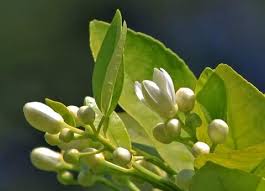Secondary Plant Metabolites: Physiologically Active Design









Secondary Plant Metabolites: Physiologically Active Design
Secondary metabolites are made by the plant even though they are not necessary for its immediate survival or its day-to-day economy. They do not participate in the metabolic processes of deriving energy from nutrition or the propagation of the species. They do, however, contribute to the mid- and long-term success of the plant by ensuring its survival vis-a-vis competing organisms and by improving its odds for reproduction .
This is rather a tall order, considering the limitations of plant life. Plants do not have an immune system, but they need to resist the challenges of bacteria, fungi, and viruses. They need to defend against herbivores and attract pollinators. In short, they face complex requirements in relating to the world around them.
Since plants do not speak or move, the need to relate to other plants and animals is answered by developing molecules that trigger physiological responses in other organisms, in this context referred to as " target organisms." These molecules, the secondary metabolites influence the behaviour of a target organism in the interest of the plant. They defend or attract, but they also produce other specific interactions.
Secondary metabolites achieve this by connecting not with one but with a variety of physiological processes of the target organism. The three main molecular targets modified by plant secondary metabolites are
Proteins - DNA and RNA - Biological membranes (or biomembranes)
To reach this degree of efficiency, secondary plant metabolites underwent intense molecular modeling over the long periods of biological evolution and, because of this, reflect the genius of life itself. The intricate and intense ways in which secondary metabolites are an integral part of the whole symphony of life make their actions fundamentally different from those of synthetic medicines.
From the perspective of aromatherapy there is one more consideration. The plant uses its innate biochemical pathways to generate a broad structural diversity of secondary metabolites, including essential oil components, flavonoids, alkaloids, saponins, and pigments.
Most of those are polar (better soluble in water than the nonpolar essential oil components) and of higher molecular weight. They remain within the plant organism and display their effect once a herbivore or microorganism tries to feed on the plant. In contrast terpenoids and phenylpropanoids are lipophilic and volatile ( easily evaporated). They are among the plant's main means to communicate with other organisms over a distance.
Reference: The Healing Intelligence of Essential Oils: Kurt Schnaubelt, Ph.D.
Articles Latest
- CARDAMON
- CARAWAY
- CANANGA
- CAMPHOR
- CALAMUS
- Calamintha-Calamintha officinalis
- CAJEPUT- Melaleuca cajeputi
- Plant Expression
- Molecular Target: Cell Membrane
- CADE Essential Oil
- CABREUVA
- The Kashmiri rose oil worth millions
- Agarwood: The natural treasure worth more than gold whose heady scent is driving it towards extinction
- Nonselective Binding to Proteins: The Science of Advanced Aromatherapy
- Molecular Target: DNA, RNA, and Gene Expression
- BUCHU - Agothosma betulina
- BROOM - SPANISH - spartium junceum
- BORONiA - Boronia megastigma
- BORNEOL - Dryobalanops aromantica
- Boldo Leaf - Peumus boldus
- Birch White-Betula Alba
Articles-Most Read
- Home
- Balsam Canadian - Abies balsamea
- Copaiba Essential Oil
- Balsam Peru
- Basil French - Ocimum basilicum
- North America: Tea Tree and Monarda-3
- Basil Exotic
- North America: Tea Tree and Monarda-2
- Exploring Transcultural Constants
- Thyme Essential Oil
- Balsam Tolu
- Palma Rosa
- The Bioactivity of Essential Oils
- Benzoin - Styrax benzoin
- Why Pharmacology Cannot Demonstrate Essential Oil Efficacy
- Bay - West Indian - Pimenta racemosa
- Exploring Essential Oil Activity The Conventional Way
- Aromatherapy: An Answer
- Complex information From Plants
- Contacts
